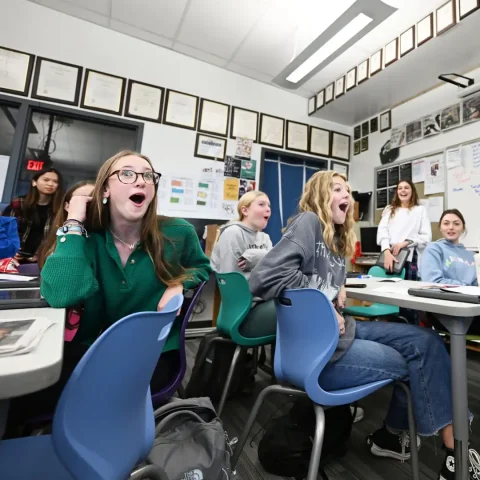The first thing you, as a student journalist, should know about the law is that you should know more than about the law. You also should understand the peripheral areas of the law.
For example, a yearbook editor may think the law protects his decision to include a photo of a student holding a gun in the yearbook. After all, why can’t a feature on student interests include a hunter and National Rifle Association enthusiast?
If the editor knows case law established by Tinker v. Des Moines Board of Education (1969), Hazelwood School District v. Kuhlmeier (1988), and more recent lower court decisions, he knows that students do not “shed their constitutional rights to freedom of speech or expression at the schoolhouse gate,” as the U.S. Supreme Court stated in Tinker.
Yet, the principal exercises censorship and removes the “gun” photo from the layout. Was the principal’s action justified? Were the editor’s rights denied? Was the law upheld? It is hard to tell unless you have peripheral vision.
Knowing what the law (Tinker, Hazelwood, et al) says is not enough. You have to see beyond the law itself. You have to see the context in which the law is being applied.
If the yearbook is from Columbine High School in Columbine, Colo., where 13 people were murdered by two gun-toting students in 1999, the principal may have evidence that the “gun” photo would rekindle emotional trauma, causing “material and substantial disruption.” Or the principal may have another argument that there are “legitimate educational reasons” why the photo should be barred in his school’s yearbook.
But in any high school in Montana, where one-quarter of the state population hunts, a principal may be hard-pressed to come up with legal justification for censoring the “gun” photo.
Sometimes court rulings are inconsistent, but often they only appear that way. Judicial interpretation can remain constant despite the illusion of conflicting decisions. It may not be the interpretation of the law that differs but rather the circumstances of each case.
A federal district court in South Carolina ruled in favor of the principal who prohibited students from wearing Confederate flag jackets to school (Phillips v. Anderson School District). However, in a Kentucky case, the Sixth Circuit Court upheld the right of two students to wear Confederate flag shirts (Castorina v. Madison County School Board).
The South Carolina school was experiencing racial tension. In the Kentucky school, there was no evidence to support a forecast of substantial disruption.
This summer, the U.S. Supreme Court ruled a display of the Ten Commandments at the Texas State Capitol was constitutional, but displays at two Kentucky courthouses were not.
The different circumstances: the Texas display generated little controversy and was not intended to stir emotions about the promotion of religion; the Kentucky displays were catalysts that provoked religious/non-religious alignments that jeopardized state neutrality.
Of course, some courts do disagree about the interpretation of a law. Then you are bound to follow the interpretation set forth by the highest court in your jurisdiction.
In the yearbook class, the best way for students to be in harmony with scholastic press law is to maintain a panoramic vision when making judgments about any aspect of their yearbook work. That vision should reach beyond legal issues.
Non-legal considerations that should factor into judgments include a sense of ethical responsibility, an awareness of community values and standards, and an understanding of the potential impact of decisions.
Every decision has its ethical dimensions. Having the right to print something does not make it right to print it. Do yearbook staff members avoid giving preferential coverage to their friends and otherwise using their position to advance self-interests above community service? Do staff members respect the privacy and integrity of the people they are covering? Do staff members guard the credibility, dignity and reputation of the yearbook?
Community values and standards affect ethical judgments and are often a measurement in helping to determine legal resolutions. Do yearbook staff members consider the values and standards of the community in making yearbook judgments? Do staff members demonstrate the courage to do what is right above what is popular regarding the values and standards of their peers? Do staff members reflect high values and standards in their work?
The impact of decisions can be profound in positive or negative ways. Do yearbook staff members explore who may be affected by coverage, how they may be affected, and what unexpected consequences could occur from staff decisions? Do staff members balance rights with responsibilities and respect in the decision-making process? Do staff members operate within a system of safeguards that helps detect poor decisions before they are implemented?
A keen awareness of these non-legal considerations can provide guidance for yearbook staffs in ways that provide greater insight of scholastic press law, help protect editorial autonomy and contribute toward an excellent publication.
Student journalists can best serve the law by serving the best interests of their school community. It’s not enough just to know what the law says. You also need to know how the law is being used. That awareness is acquired through peripheral vision. And that awareness will make you better prepared to meet any legal and ethical challenges of the day.
For more information on the cases mentioned in this story, go to http://www.splc.org/law_library.asp.



